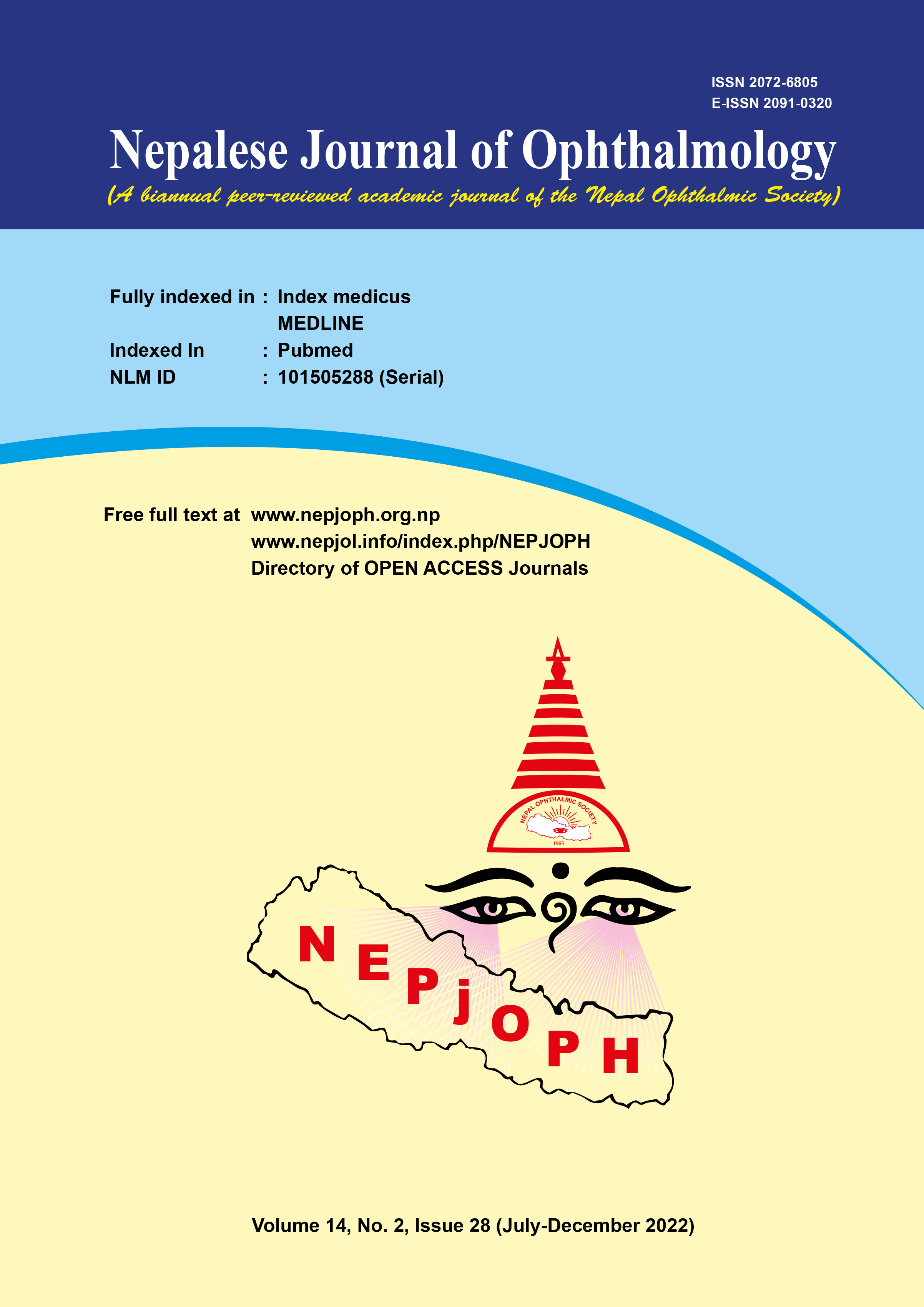Proliferative diabetic retinopathy detection: Comparison of clinical examination, optomap photographs and fluorescein angiography
DOI:
https://doi.org/10.3126/nepjoph.v14i2.39516Keywords:
Fluorescein angiography, Optomap imaging, Proliferative diabetic retinopathy, Retinal examinationAbstract
Introduction: This study aimed to analyse the clinical retinal examination findings and undilated Optomap ultrawide field retinal imaging for the detection of proliferative diabetic retinopathy (DR) as compared to the fluorescein angiography (FA).
Materials and methods: In this retrospective cross-sectional study, five hundred and twenty-three patients diagnosed with diabetic retinopathy on dilated retinal examination underwent fluorescein angiography and undilated Optomap imaging. Fluorescein angiography and undilated Optomap images were graded by masked graders and the diagnosis was labelled either as proliferative diabetic retinopathy or non-proliferative diabetic retinopathy. Sensitivity and specificity was calculated comparing the diagnosis obtained from the dilated retinal examination and the undilated Optomap images against the fluorescein angiography image findings.
Results: Gradable quality fluorescein angiography and undilated Optomap images with a clinical diagnosis mentioned in the medical record for that particular visit were available in 980 (right eye – 656; 67%; left eye – 324; 33%) eyes of 496 patients. There were 332 (67%) males and 164 (33%) females with a mean age of 60.3 ± 9.51 years (range: 32 – 81 years). Sensitivity of clinical examination and undilated Optomap images in accurately identifying proliferative diabetic retinopathy was 63.5% and 43.5% respectively. Specificity of clinical examination and undilated Optomap images in accurately identifying proliferative diabetic retinopathy was 88.5% and 76.2% respectively. On comparison of the undilated Optomap imaging findings against the clinical examination findings, the sensitivity and specificity were 47.7% and 75.1% respectively.
Conclusion: Both clinical fundus evaluation and undilated Optomap imaging were relatively inferior to fluorescein angiography in the detection of proliferative diabetic retinopathy, which hence remains the choice of imaging modality giving scope for wider application.
Downloads
Downloads
Published
How to Cite
Issue
Section
License
Copyright (c) 2022 Nepalese Journal of Ophthalmology

This work is licensed under a Creative Commons Attribution-NonCommercial-NoDerivatives 4.0 International License.
This license enables reusers to copy and distribute the material in any medium or format in unadapted form only, for noncommercial purposes only, and only so long as attribution is given to the creator.




